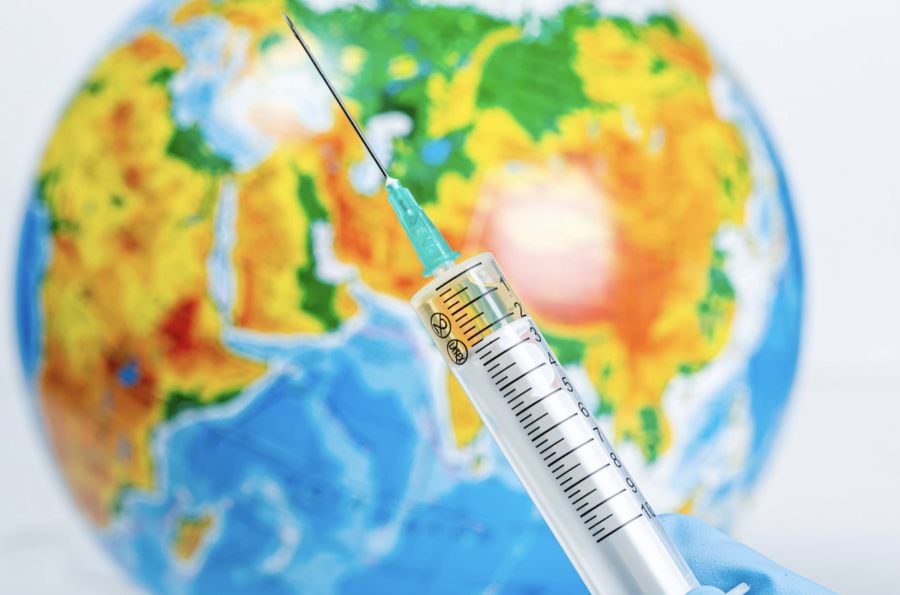After decades of research, testing and development, the world may finally have a vaccine to turn the tide against malaria. The new malaria vaccine, also known as RTS,S or by its brand name Mosquirix, was developed by GlaxoSmithKline.
Malaria is an infectious disease caused by amoeba-like parasites of the Plasmodium genus. This serious and sometimes fatal disease is transmitted by mosquitoes that carry the parasites and infect humans after a blood meal. Malaria is common in tropical and subtropical regions of the world. It affects more than 100 countries, including large areas of South America, the Caribbean, Asia, Africa and Oceania.
Malaria has long plagued humanity and despite significant medical advancements, it continues to take hundreds of thousands lives every year. In 2019, the World Health Organization estimated 229 million cases of malaria and around 409,000 deaths, with children under the age of five accounting for 67 percent of these deaths.
On Oct. 6, the WHO endorsed the RTS,S vaccine and recommended broad vaccination efforts for children in regions most affected by malaria. At a press briefing following the endorsement, WHO Director-General Dr. Tedros Adhanom Ghebreyesus remarked on this historic moment.
“The long-awaited malaria vaccine for children is a breakthrough for science, child health and malaria control,” Ghebreyesus said during a press briefing. “Using this vaccine on top of existing tools to prevent malaria could save tens of thousands of young lives each year.”
RELATED: Q&A with Dr. Nathan Price: COVID-19 vaccinations and disease in children and adolescents
With a moderate efficacy of about 50 percent against severe malaria, preliminary studies estimate that the RTS,S vaccine has the potential to prevent 5.4 million cases and save the lives of 23,000 children annually.
Many public health experts around the world are celebrating this achievement but some fear that excitement over the vaccine will overshadow logistical and financial hurdles that must be addressed.
The vaccine is divided into four doses over an 18-month period. For some experts, this extended timeframe may limit the feasibility of deploying the vaccine and strain already limited resources in low-income countries.
Kacey Ernst, professor and program director of Epidemiology at the Mel and Enid Zuckerman College of Public Health, explained that there needs to be dedicated supply chains, infrastructure and clinical support.
“Often in low-resource settings we see supply chain disruptions or even social unrest that can hinder a vaccination program,” Ernst said via email. “In addition, international donor funding and national level investments in the vaccine are needed and must be committed for the long haul.”
RELATED: New plastic could remove tons of sulfur from oil plants
Experts from the Center for Global Development, a nonprofit think tank based in Washington, D.C., warn against the cost of deploying malaria vaccines without adequate support. Their research suggests that an effective vaccination program in 10 African countries with the highest incidence of malaria would cost roughly $325 million each year. They predict that this cost may force some governments to reconsider a malaria vaccination program and opt for a more cost-effective alternative.
In a statement on Sept. 8, a month before the endorsement of the RTS,S vaccine, the CGD urged the WHO to make future malaria vaccine recommendations “contingent on national and subnational assessments [that] reflect local realities, preferences and values.”
Time will tell how experts and decision-makers incorporate the RTS,S vaccine into a pragmatic malaria prevention program that can adapt to the unique public health needs of various regions.
For Ernst and many other experts, the vaccination is not a “silver bullet” against malaria. Instead, Ernst states that the vaccine is an additional tool that must be combined with proven methods of prevention.
RELATED: Footprints suggest humans arrived in the Americas earlier than previously thought
“I anticipate that [the vaccine] will be rolled out as part of other prevention strategies and likely integrated into childhood wellness programming in malaria affected areas,” Ernst said via email. “Given the vaccine’s relatively low efficacy—by comparison, the measles vaccine is over 90 percent effective—families will still need to protect themselves by using mosquito nets, indoor residual sprays and other strategies to more comprehensively prevent the spread of malaria.”
Despite clear obstacles and limitations, the RTS,S vaccine offers a glimmer of hope for nations and families ravaged by malaria. For many, this vaccine is a critical step towards preventing loss of life, protecting the livelihood of millions, and expanding our knowledge against infectious disease.
“Malaria has been with us for millennia, and the dream of a malaria vaccine has been a long-held, but unattainable dream,” Ghebreyesus said during the conclusion of the Oct. 6 briefing. “Today, the RTS,S malaria vaccine, more than 30 years in the making, changes the course of public health history. We still have a very long road to travel. But this is a long stride down that road.”
Follow Andres Diaz on Twitter









